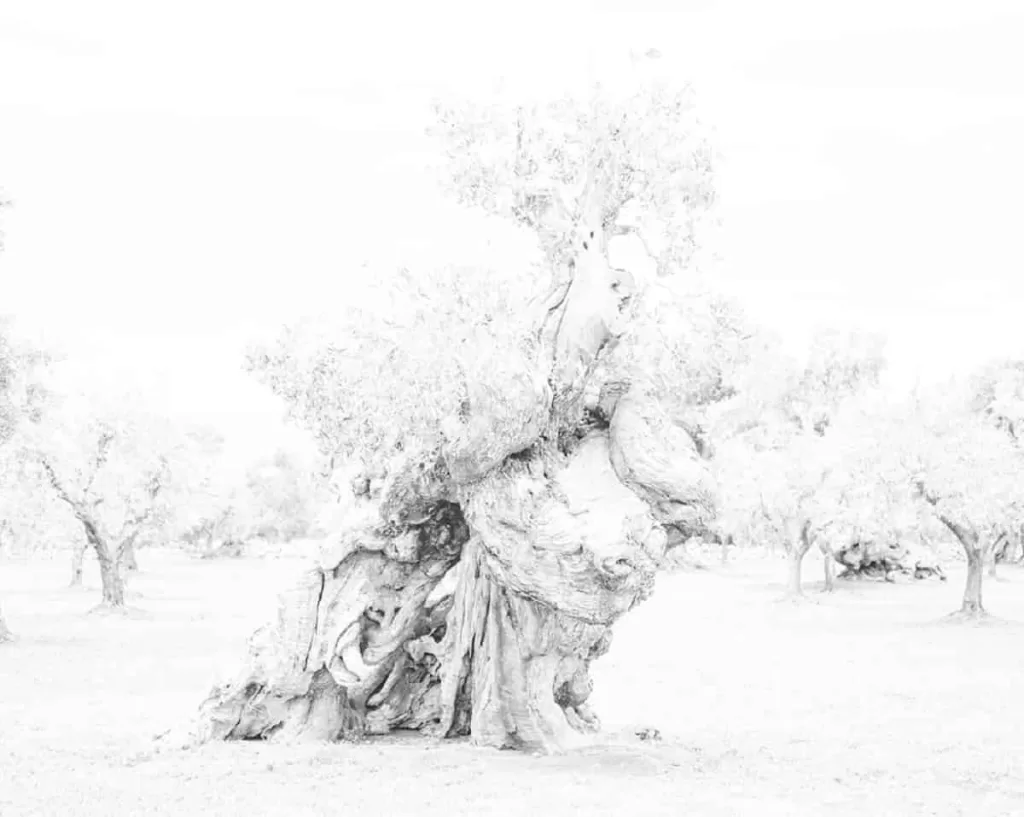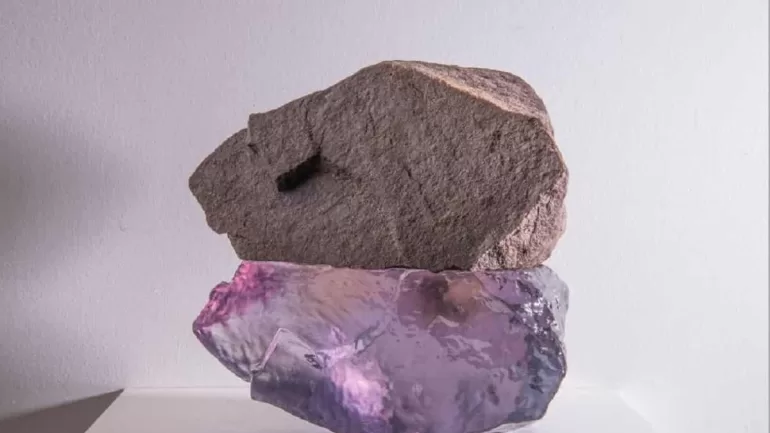ART REVIEW
John Ruppert’s powerful contemporary sculpture and photography inspired by nature and time take shape in the Vestiges of Time.
BY KAZEEM ADELEKE, ARTCENTRON
BALTIMORE, MD- In Vestiges of Time: Traces in Light and Materials at the C. Grimaldis Gallery in Baltimore, acclaimed American sculptor and visual artist John Ruppert presents a deeply immersive solo exhibition. Ruppert is renowned for his material-based sculptural practice and conceptual engagement with organic forms. In this thought-provoking collection, the artist pushes the boundaries of both form and meaning. Through a faultless integration of photography, cast aluminum sculpture, and advanced digital technologies, the artist explores the traces of natural phenomena. He also examines the impact of human intervention and the silent imprint of time.
The art exhibition invites viewers to reflect on recurring cycles—decay and regeneration, permanence and impermanence. These themes have defined Ruppert’s artistic practice for over four decades. Visually compelling and intellectually rigorous, Vestiges of Time is a masterclass in contemporary sculpture and photographic composition.
At the core of the exhibition lies a powerful interplay between photographic imagery and sculptural form. Ruppert’s photographic works do not merely document; they sculpt with light. Each image is carefully composed, with an architectural sense of structure and balance. These photographs echo his sculptural instincts—textured, layered, and dimensional.
By juxtaposing elemental materials—stone, metal, resin, and natural wood—with imagery that captures fleeting light and ephemeral moments, Ruppert creates a dialogue between eras. He builds a conceptual bridge between the ancient and the modern. The effect is a mesmerizing synthesis of time, medium, and meaning. In doing so, he challenges the viewer to reimagine familiar forms. Trees, rocks, and light become more than visual objects. They emerge as repositories of geological memory and cultural history.
The use of high-resolution imaging, digital manipulation, and traditional casting techniques establishes a striking duality in the exhibition. It mirrors the ongoing dialogue between nature and machine, decay and preservation, and entropy and order.
Reimagining the Ancient Olive Tree in the Digital Age

One of the exhibition’s most visually striking series, Olea Europaea, features monumental composite photographs. These images depict centuries-old olive trees from Puglia, Italy. The trees—worn, knotted, and hollowed by time—serve as symbols of endurance and transformation.
Ruppert employs digital compositing techniques, layering dozens of photographs to produce images of stunning detail and surreal clarity. Every crevice, fissure, and scar in the bark is rendered with surgical precision, turning each tree into a living archive. The manipulation of contrast, light, and depth of field transforms these natural forms into sculptural monuments.
What is particularly compelling is how these trees, ancient and seemingly eternal, are shown to rely on modern irrigation technologies. This symbiotic relationship draws attention to the tension between sustainability and cultivation, between wild nature and human-imposed control. It is a visual essay on how civilization both preserves and alters the natural world.
Contemporary Sculpture Cast in Aluminum and Stone
In the Berg series, Ruppert returns to one of his signature materials—cast aluminum. By casting stone and rock formations in molten metal, he captures the textures of erosion, sedimentation, and geological pressure. The resulting sculptures glimmer with a surreal, almost sacred quality.
Displayed alongside their original rock counterparts, these works highlight the contrast between natural matter and manufactured artifacts. The aluminum, while reflective and pristine, retains the physical memory of the stone’s form. This transformation from raw geological material to refined sculpture embodies the central theme of the exhibition: that time leaves behind both physical and symbolic residues.
In the Berg series, Ruppert redefines permanence. He renders fleeting formations eternal, translating the ephemeral into the monumental.
Rock Reflections: Mirrored Realities and Optical Illusions
Further expanding his investigation into form and perception, the Rock Reflections series employs 3D scanning and resin-based 3D printing to recreate rocks with uncanny precision. These mirror-image replicas challenge notions of authenticity and illusion.
The translucent resin reflects and refracts light, creating ghostly echoes of their stone originals. As a viewer moves around each piece, the sculpture appears to shift—both solid and spectral. This play with perspective not only questions the boundaries between real and artificial but also evokes deeper themes of self-reflection and perception.
Here, materiality becomes a metaphor. The sculptures are not merely objects but visual riddles that destabilize the viewer’s sense of reality.
Perhaps the most dramatic works in the exhibition appear in the Strikes series. Here, Ruppert captures the violent force of lightning. He casts fragments of bark torn from trees during electrical storms. These jagged aluminum forms reveal a moment of nature’s violence, transforming it into sculptural permanence.
Each sculpture becomes a frozen explosion—a testament to the sublime energy of nature. The forms recall abstract expressionist gestures, yet they are grounded in physical truth. This transformation of destruction into beauty exemplifies Ruppert’s gift: to translate natural events into powerful visual metaphors.
Natural phenomena meet sculptural precision in these works, giving form to the unseen forces that shape our world.
John Ruppert: A Visionary in Contemporary Sculpture
John Ruppert’s career spans over forty years. In that time, he established himself as a visionary in contemporary art, especially in material-based and conceptual sculpture. His work has been featured in major institutions, including the Decordova Museum, Academy Art Museum, OMI International Sculpture Park, and Kreeger Museum. His accolades include the Pollock-Krasner Foundation Award, the Mary Sawyers Baker Award, and five Individual Artist Grants from the Maryland State Arts Council. In 2024, he was invited to exhibit at the Venice Biennale—one of the most prestigious international platforms for contemporary art. As Professor Emeritus and former Chair of the Department of Art at the University of Maryland, he has also made enduring contributions to art education and mentorship. His legacy continues to shape new generations of sculptors and visual thinkers.
This exhibition marks his seventh solo presentation with the C. Grimaldis Gallery, reaffirming a long-standing and fruitful collaboration that champions innovation, critical discourse, and artistic excellence.
Vestiges of Time: A Timeless Encounter
More than a collection of art objects, Vestiges of Time: Traces in Light and Materials is an experiential narrative. It draws us into a meditative dialogue on what endures and what fades. Through the language of sculpture, photography, and digital technology, John Ruppert invites us to see the world anew.
Each piece in the exhibition—a spectral tree, a gleaming cast rock, or a lightning-struck form—bears witness to the world’s subtle transformations. The exhibition resonates not only with collectors and art enthusiasts. It also speaks to anyone who senses the fragile poetry of the natural world.
For collectors, curators, scholars, and enthusiasts of contemporary sculpture, this exhibition is a must-see event. Vestiges of Time marks both a culmination and a continuation. It stands as an enduring statement from one of America’s most innovative and insightful artists.
- Featured image: John Ruppert, Rock Reflections 4. Rocks are digitally scanned, a digital file is then inverted, and 3D printed in solid resin. This contemporary sculpture is one of the major works in his recent art exhibition. Image: Image courtesy C. Grimaldis Gallery
Vestiges of Time: Traces in Light and Materials through May at the C. Grimaldis Gallery, 523 North Charles Street, Baltimore, MD 21201.
